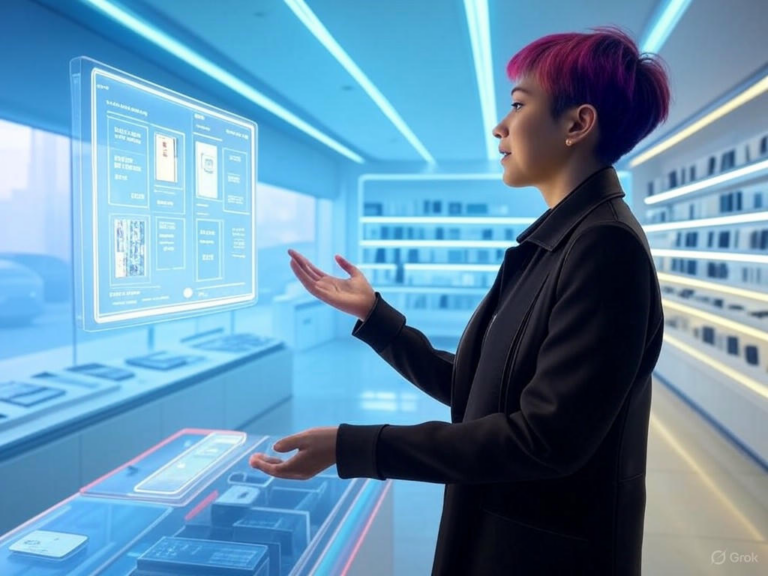
Early Lung Cancer Detection Using Advanced AI Tool
The AI Revolution in Lung Cancer Detection
Have you ever wondered how technology could turn the tide against one of the deadliest diseases? AI lung cancer detection is making that possible, offering a beacon of hope in the fight against lung cancer, which claims around 1.8 million lives each year. Late diagnoses often limit treatment options, but advanced AI systems are stepping in to spot the disease early, when it’s most treatable.
These innovative tools go beyond traditional methods, delivering unprecedented accuracy and speed in cancer screening. By harnessing artificial intelligence, healthcare providers can now identify subtle signs that might otherwise go unnoticed, potentially saving countless lives through earlier interventions.
AI Lung Cancer Detection Milestone: 5 Million Screenings
Imagine reaching 5 million people with cutting-edge AI lung cancer detection across diverse regions—it’s no longer just a vision. AstraZeneca and Qure.ai have achieved this landmark with AI-enabled chest X-rays in over 20 countries, from Asia to Latin America, as shared at the European Lung Cancer Congress in 2025.
This effort aligns with global initiatives like the World Economic Forum’s EDISON Alliance, making advanced screening more accessible in areas with limited resources. The data shows qXR® identifying high-risk lung nodules in over 54% of cases, outpacing conventional approaches and highlighting the transformative power of AI lung cancer detection.
Why AI Lung Cancer Detection Outperforms Traditional Methods
One key advantage is its superior sensitivity—achieving over 90% compared to 70-80% with standard techniques. This means fewer cases slip through the cracks, giving patients a real chance at early treatment.
Plus, AI reduces false positives by up to 30%, cutting down on unnecessary procedures and easing patient stress. In a world where time is critical, these systems process scans in minutes, not the hour or more it might take a radiologist.
How AI Enhances Early Lung Cancer Detection
AI’s predictive prowess is truly groundbreaking. Researchers at MIT, for instance, have created models that can forecast lung cancer risks years before symptoms show, using data from patient scans.
These tools spot patterns invisible to the human eye, predicting the disease up to six years ahead. It’s like having a crystal ball for healthcare—what if we could intervene that early and prevent the worst outcomes?
Real-World Impact of AI Lung Cancer Detection
Transforming Care at University Hospitals
At University Hospitals Cleveland Medical Center, AI lung cancer detection is already in action through a partnership with Qure.ai. Their FDA-cleared qXR-LN acts as a second pair of eyes, flagging suspicious nodules on chest X-rays that radiologists might overlook.
Dr. Amit Gupta points out a stark reality: only about 16 out of 100 eligible people get screened for lung cancer. This AI integration bridges that gap, catching early-stage issues during routine hospital visits and turning incidental findings into lifesaving opportunities.
Think about it—simple X-rays for other reasons could reveal hidden threats, making early lung cancer detection more routine and effective.
Partnerships Driving Precision with AI
Another exciting development is the collaboration between Optellum and Bristol Myers Squibb, which leverages AI for precise lung cancer care. Their platform uses AI to analyze scans and prioritize at-risk patients.
Tools like the Virtual Nodule Clinic employ natural language processing to sift through reports and calculate risk scores based on imaging. This approach ensures multidisciplinary teams can act quickly, potentially boosting survival rates through timely interventions.
Beyond Basics: AI’s Comprehensive Role in Cancer Care
AI lung cancer detection isn’t just about spotting issues—it’s about providing deeper insights. These systems evaluate tumor characteristics, like size and potential growth, to guide monitoring and treatment plans.
In busy hospitals, AI helps prioritize cases, ensuring critical patients get attention first and reducing variability in care. During procedures like biopsies, it assists radiologists for greater accuracy, even pinpointing tumors in CT or MRI scans to protect healthy tissue.
Have you considered how this level of precision could change outcomes for patients worldwide?
Challenges and the Road Ahead for AI Lung Cancer Detection
Overcoming Hurdles in Standardization
Despite the progress, integrating AI lung cancer detection into everyday practice faces obstacles, such as ensuring consistent standards across settings. Distinguishing benign nodules from cancerous ones remains tricky, often leading to unnecessary procedures or delays.
Ongoing research is key to refining these tools and maximizing their benefits. By addressing these issues, we can make AI more reliable and accessible for all.
Expanding Reach and Innovations
The future lies in broadening AI lung cancer detection to underserved areas, including community hospitals. With low screening enrollment rates, opportunistic approaches—like analyzing existing CT scans—could catch pre-symptomatic cancers in real time.
Combining AI with technologies like liquid biopsies promises even better results, detecting molecular changes before imaging shows anything. This integrated strategy could revolutionize screening, making it more sensitive and specific.
Conclusion: Embracing AI for Early Lung Cancer Detection
As we look ahead, AI lung cancer detection stands as a game-changer, with capabilities to predict and identify cancer earlier than ever. From reducing false positives to enabling six-year forecasts, it’s paving the way for better survival rates and more personalized care.
With successes like the 5 million screenings milestone, we’re seeing real-world proof of its potential. Experts believe we’re just beginning to tap into what AI can do for cancer care—what’s your take on this exciting evolution?
If you’re interested in staying informed, consider exploring more on preventive health or sharing your thoughts in the comments below. Let’s discuss how these advancements could impact you or your loved ones, and don’t forget to check out related articles on our site for deeper dives.
References
- Qure.ai Press Release. “A new era for lung cancer detection.” Source
- UH Hospitals News. “UH Cleveland Medical Center activates AI for early lung cancer identification.” Source
- Mass General Brigham. “AI for early detection of lung cancer.” Source
- AuntMinnie. “GE Healthcare: AI will transform early cancer detection.” Source
- PubMed. “AI and biomarker-driven methods in lung cancer detection.” Source
- Exploding Topics. “Technology trends including AI in healthcare.” Source
- ITN Online. “Optellum and Bristol Myers Squibb leverage AI for lung cancer diagnosis.” Source
- Type.ai Blog. “AI for SEO applications.” Source (referenced for AI integration insights)
AI lung cancer detection, early cancer diagnosis, artificial intelligence healthcare, chest X-ray AI, lung nodule detection, advanced AI tools, lung cancer screening, AI in oncology, predictive cancer models, precision medicine AI







